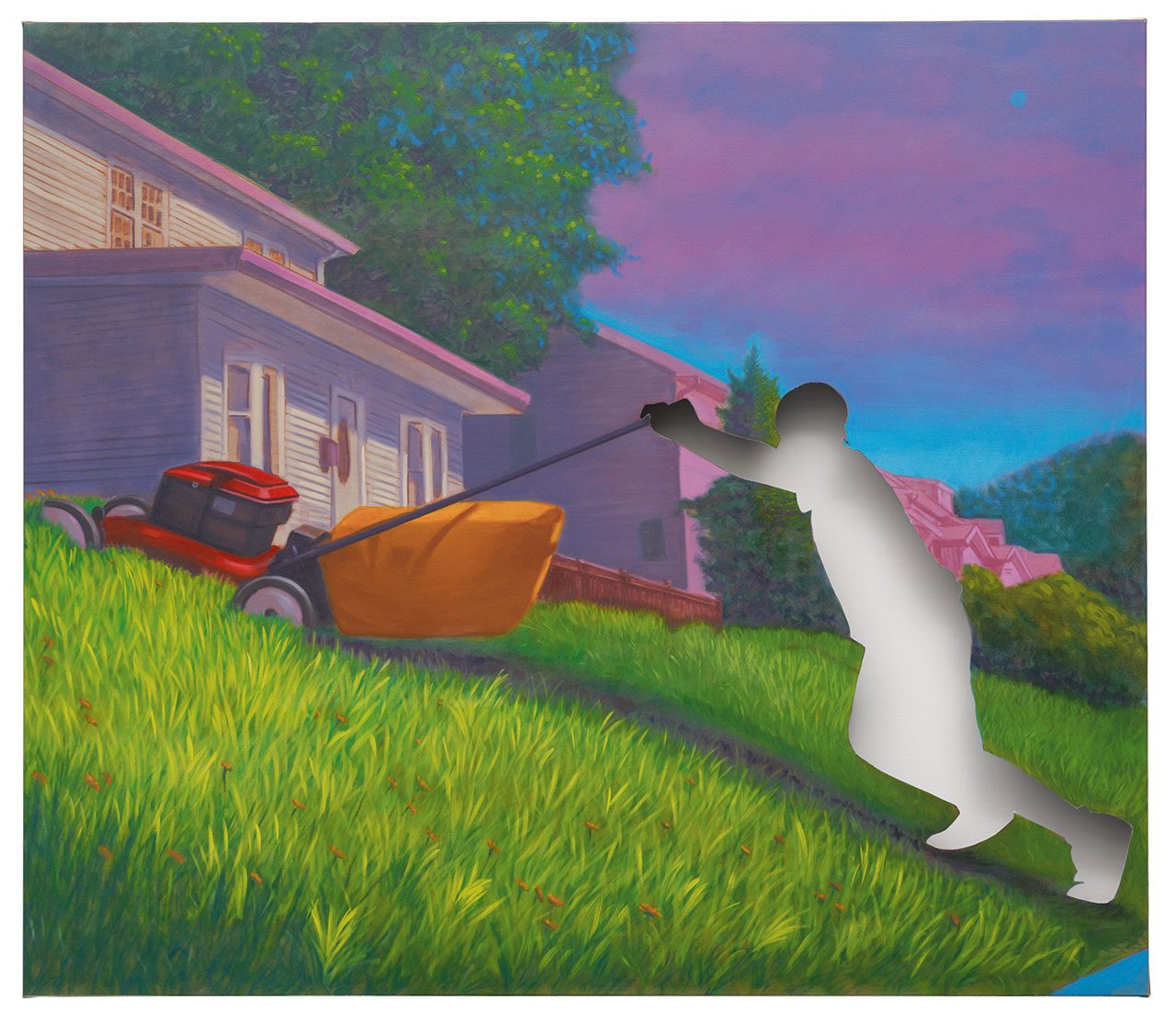PRESENTATION: Titus Kaphar-Exhibiting Forgiveness
 Painter, sculptor, filmmaker, and installation artist Titus Kaphar confronts history by dismantling classical structures and styles of visual representation in Western art in order to subvert them. Dislodging entrenched narratives from their status as “past” so as to understand and estimate their impact on the present, he exposes the conceptual underpinnings of contested nationalist histories and colonialist legacies and how they have served to manipulate both cultural and personal identity.
Painter, sculptor, filmmaker, and installation artist Titus Kaphar confronts history by dismantling classical structures and styles of visual representation in Western art in order to subvert them. Dislodging entrenched narratives from their status as “past” so as to understand and estimate their impact on the present, he exposes the conceptual underpinnings of contested nationalist histories and colonialist legacies and how they have served to manipulate both cultural and personal identity.
By Efi Michalarou
Photo: Gagosian Archive
Shown for the first time, the group of paintings is featured in Titus Kaphar’s first narrative feature film, “Exhibiting Forgiveness” (2023), which debuted at Sundance this year and will be released theatrically in the US on October 18. The semi-autobiographical “Exhibiting Forgiveness” stars André Holland as Tarrell Rodin, an accomplished painter whose life is upended by an unexpected reunion with his father, La’Ron (John Earl Jelks), a recovering addict who hopes to rebuild a relationship with his estranged son. Tarrell, now an active and loving father and husband, is skeptical despite the encouragement of his mother. Written and directed by Kaphar, “Exhibiting Forgiveness” follows his documentary shorts “Shut Up and Paint” (2022) and “The Jerome Project” (2016) of which was inspired by a painting series initiated in 2014 exploring the artist’s relationship with his own estranged father. The exhibition “Exhibiting Forgiveness”is a direct, though fictionalized, extension of “The Jerome Project”. In addition to portraits, the artwork of the exhibition depict figures, façades of neighborhood houses, personal objects, and ephemera. These are emotionally and intellectually charged pieces. The paintings preceded the film; as Kaphar says, “they spring from the same personal, emotional and psychological well” that is the source for all his work. Combining a mastery of oil painting techniques with application of heterogenous mediums and innovative methods, Kaphar challenges conventional representation to provoke deep contemplations of family, community, and memory. Painting some canvases in highly saturated palettes and draining others of color, he combines gold leaf with tar—suggesting both divine transcendence and being stuck. Kaphar renders grief and loss, obscuring bodies, or removing them outright with knife-cut excisions. What remains is a testament to how we continue to live despite our wounds. Large-scale paintings of homes in a working-class American community, with figures in their foregrounds, employ vivid purples, reds, blues, and yellows related to the colors of the series “From a Tropical Space” (2020). These are joined by works such as “Bad memories more saturated than good ones” (2023), in which an overburdened truck serves as an emblem that recapitulates childhood trauma. The painting itself is an ethical statement, honoring the community that carries the wounds of our past. The beauty of the environs is not just a fact, it is a reminder of all that exists—sweet and bitter—in this community. The conversation between the film and the paintings is vital; the film testifies to the power of art as a medium for the intellectual and spiritual labor that is necessary for healing. The paintings, each titled with a line from Kaphar’s screenplay, speak to how art is rooted in the trials of everyday life. The paintings capture people, places, and incidents from the past and present, images that signpost “Exhibiting Forgiveness” characters, symbolism, and plot. Portraits are emblematic of changing relationships between family members: “For your prayer closet” (2023), an icon composed with gold leaf and layered tar that stems from “The Jerome Project” paintings, shapes the film’s culminating scene. Flashback sequences directed by Kaphar physically incorporate the paintings of neighborhood views, moving them through on-screen space—a transitional device that conveys the protagonist’s state of mind as he comes to terms with his past. Together, the exhibited works reveal an expansion of Kaphar’s compositional and narrative strategies, exploring the ways in which humans find forgiveness and move forward.
Photo: Titus Kaphar, I hear you in my head, 2023, Oil on canvas, 72 x 84 inches (182.9 x 213.4 cm), © Titus Kaphar, Photo: Owen Conway, Courtesy Gagosian
Info: Gagosian, 456 North Camden Drive, Beverly Hills, CA, USA, Duration: 13/9-2/11/2024, Days & Hours: Tue-Sat 10:00-17:30, https://gagosian.com/



Right: Titus Kaphar, So vulnerable, 2023, Oil on canvas, 120 x 108 inches (304.8 x 274.3 cm), © Titus Kaphar, Photo: Owen Conway, Courtesy Gagosian
